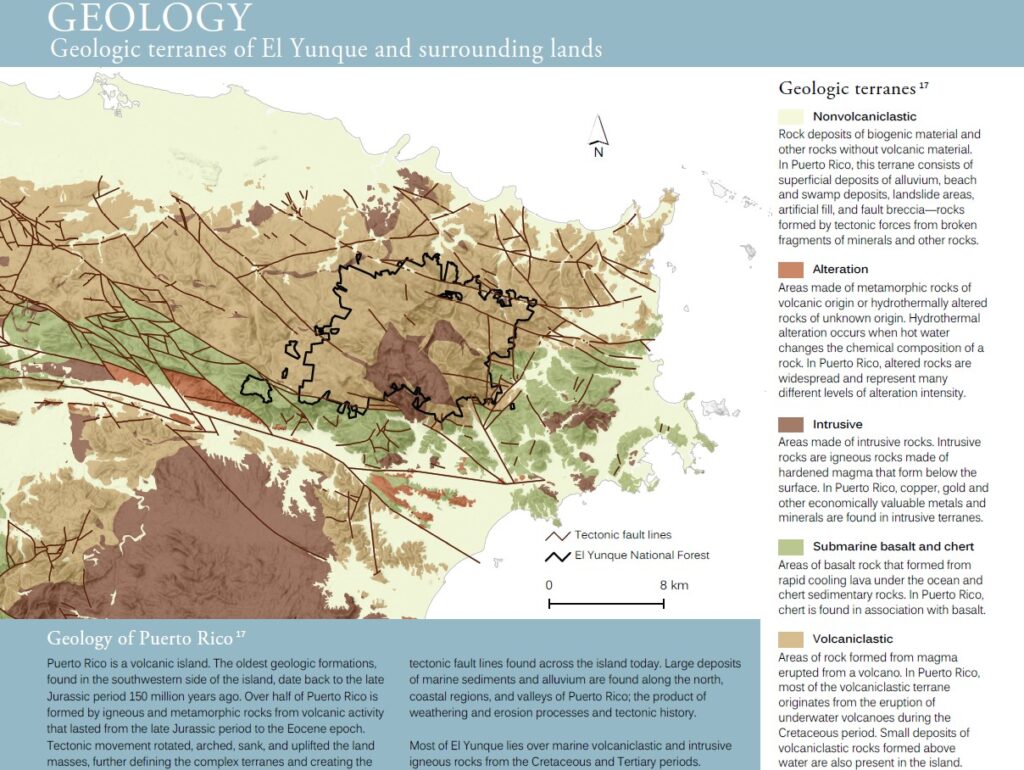By Fred Scatena

The image above is reproduced from El Yunque National Forest Atlas (Quiñones et. al 2018).
Like other islands in the Caribbean, Puerto Rico is part of a large volcanic island complex that occurs between the junction of the American and Caribbean tectonic plates. Although it is often stated that it is physically possible to see from one island to the next all the way from Florida to Venezuela, most of the Caribbean islands have never been physically connected to their neighbors. Instead they have formed during the complex sequence of geologic events that occurred during the formation of the Caribbean plate and the separation of North and South America.
The Luquillo Mountains are underlain by rocks that were formed in association with an active group of Cretaceous and Tertiary volcanoes that were standing at or near sea level. Debris from these volcanoes was deposited in moderately deep water after being transported and reworked by submarine landslides and turbidity currents. During this period the Caribbean basin also experienced a large meteor impact which has been implicated in the global extinction of dinosaurs. Following the accumulation of this volcanic debris, late Eocene or early Oligocene tectonic activity uplifted this material into the dominant structural features of the Luquillo mountains. This period of tectonic activity has been followed by a period of relative stability. There are no active volcanoes on the island today. The island does experience numerous small earthquakes every year and earthquake induced tsunami’s approximately every century. There are active volcanoes in the southern Caribbean islands, most recently on the island of Montserrat.
